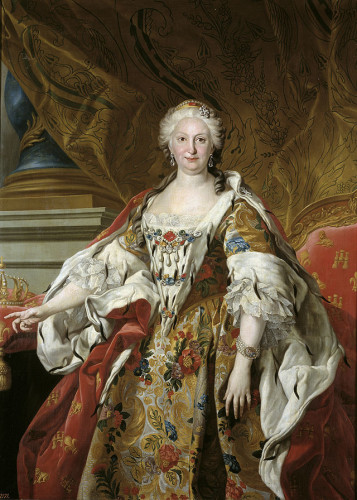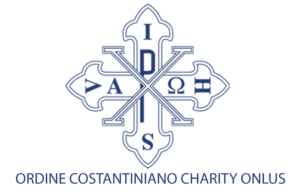 By decree of Emperor Leopold I issued on 5 August 1699, and by the Bull Sinceræ Fidei of Pope Innocent XII, issued on 24 October of that year, that notary deed was confirmed and the transfer of the Grand Magistery to the Farnese Family was explicitly authorised.
By decree of Emperor Leopold I issued on 5 August 1699, and by the Bull Sinceræ Fidei of Pope Innocent XII, issued on 24 October of that year, that notary deed was confirmed and the transfer of the Grand Magistery to the Farnese Family was explicitly authorised.
Here are the important words by which the Pontiff sanctioned that deed: «Listening to and giving our approval to the pleas presented on your behalf and on behalf of Giovanni Andrea, Prince and Grand Master, We, by motu proprio, full awareness and deliberation, due to the fullness of our apostolic power, confirm and permanently approve the transfer of this position, i.e. the position of Grand Master and life-administrator of the Constantinian Golden Militia, transfer made by the above mentioned Giovanni Andrea, Prince and Grand Master, to you and your lineage».
It is worth noting the following words: «the sincere faith and devotion that you show towards us and the Apostolic See and the many merits of your illustrious family towards this See lead us to willingly grant you and your future lineage as well as the other Princes of your family those things that would increase your honour and remain forever as an eternal sign to remember our fatherly love towards you and your family».
The Constantinian Statutes were modernised by ecclesiastic approval of 1706. Moreover, Pope Clement XI, by his Bull Militantis Ecclesiæ of 27 May 1718, gave the Constantinian Order a particular sign of his love and benevolence and granted to its Grand Prior the abbatial privileges and to its clergy the insignia of prelacy. The Order also received the authority to establish “ecclesiastic benefits”: «And should anyone dare to invalidate what established, he must know that he will incur God’s wrath and the wrath of His blessed Apostles Peter and Paul».
In his Bull of 1719 Clement XI praised the Constantinian Knights for leading more than 2,000 soldiers in Dalmatia against the Turkish army. A large quantity of documents present in the State Archive give evidence of the long and victorious war fought against the Turks by the Venetian Republic with the help of Duke Francis Farnese who sent a “Constantinian Regiment”.
Ettore Gallo wrote: «From a military point of view, the documentation on the Constantinian Regiment shows how important the valour and courage as well as a real Christian spirit of devotion to the Order values were in the small Farnese army. These principles were: “Glorification of the Cross and propagation of the Faith”»[1].
Also Duke Francis Farnese had no heir; he did not consider the Order as a privilege of the Crown and therefore ordered that it would be handed down from father to son and in case of the dying out of the family the Grand Master would be «as close as possible [by blood] to the previous Grand Master, and would belong in the Farnese family». Therefore, when on 26 February 1727 Francis I died, the powers of the State and the Grand Magistery of the Order passed to his brother Antonio, who after only four years of reign, died on 20 January 1731, leaving no heir.

At this point the role of Elisabeth Farnese became of core importance. She was the sister of the two Dukes and Queen of Spain since she had married Philip V of Anjou, winner of the War of the Spanish Succession (see the heading of the historical part The Bourbon family: three Kingdoms and a Duchy).
She succeeded in assuring this heritage of the Farnese family to the Infant Don Charles of Bourbon. In fact, the great powers, foreseeing the close extinction of the Farnese family, by the Treaty of London of 1718 established that at the death of the Farnese Duke, the Infant Don Charles would have the dominions of the Farnese family (i.e. the Duchy of Parma and Piacenza), but with no intrusion of his father, the King of Spain, not even under the excuse of family protection.
The Peace of Utrecht of 1713 demanded that. After the death of the Farnese Duke in 1727, his successor Antonio called his nephew the Infant Don Charles of Bourbon as successor of his family.
In 1731 Charles came to Parma as King; in 1734 he became King of Naples and in 1735 he was crowned in Palermo as King of Sicily. In 1759, however, the two crowns of Naples and Sicily went to his son Ferdinand who reigned until 1825, since Charles abdicated to become King of Spain (see the pages dedicated to Charles of Bourbon and Ferdinand I).
[hr]








